Traditional Windsor chair updated by Mikko Hannula
Finnish graduate Mikko Hannula based the design of this faceted metal chair on a 3D scan of a traditional wooden seat called a Windsor chair (+ slideshow).
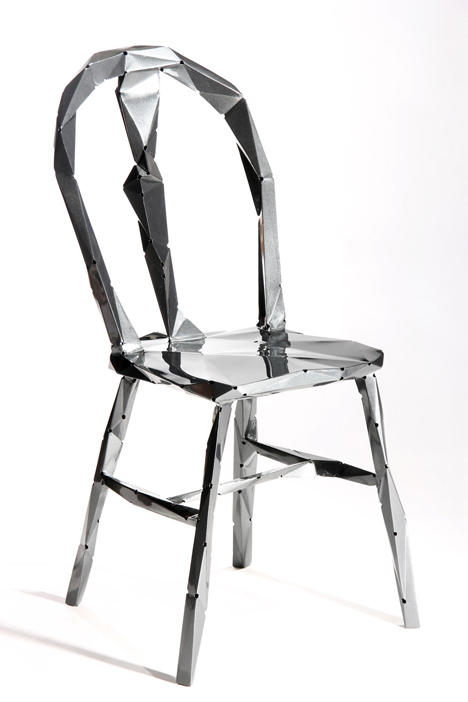
Hannula's Windsor 2.0 project explores how familiar objects can be updated using digital technologies to give them an appearance that reflects the cutting-edge tools available to contemporary designers.
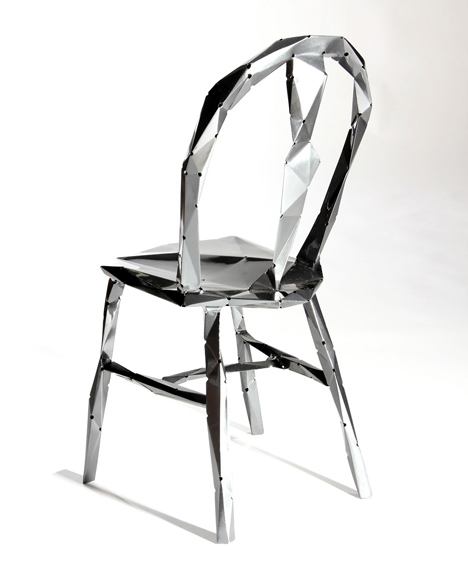
"Furniture [designs] like the Windsor chair are becoming relics in the eyes of the younger generation and they desperately need some updating to become appealing again in our digital age," Hannula told Dezeen.
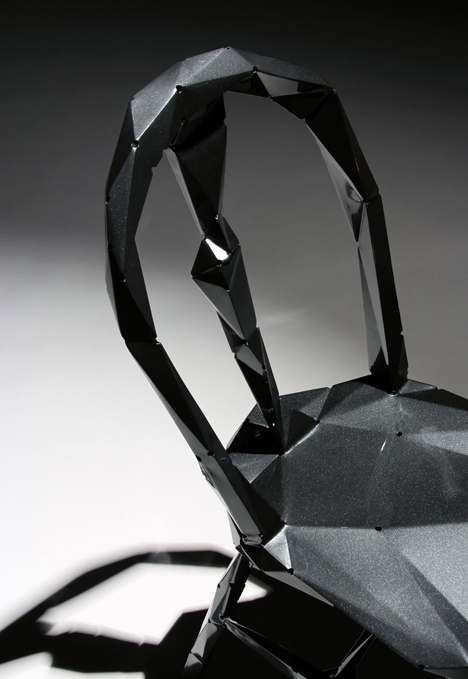
"From a manufacturing point of view this sort of digital translation opens up whole new possibilities and market opportunities for traditional products," he added.
The designer used a pocket camera and Autodesk's 123D Catch software, which transforms photographs into 3D digital models, to capture the shape of a Windsor chair - a traditional design that features a solid wooden seat into which the turned wooden legs, struts and steam-bent back are inserted.

"I chose to use the Windsor chair as the basis of my design because it has a special meaning to the British people," explained Hannula, who recently graduated from Buckinghamshire New University in High Wycombe. "It is an essential part of domestic interiors in the UK and an archetypal product in the furniture-making history in High Wycombe, the former chair-making capital of the world."
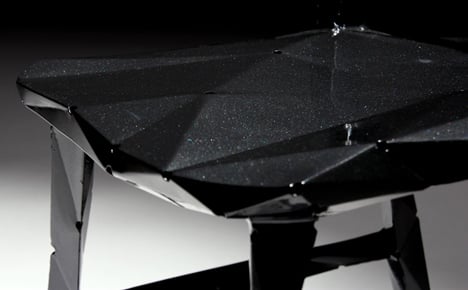
A digital model generated by scanning the chair was simplified and abstracted into a series of faceted surfaces using 3D software.
Hannula then translated the three-dimensional form into a flat net shape that could be transferred onto a steel sheet.
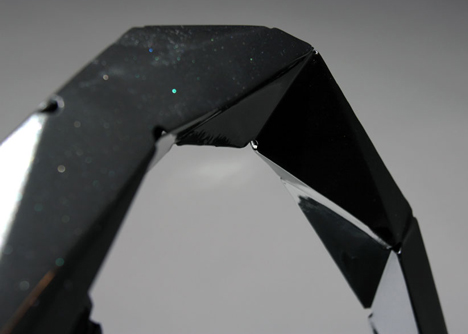
From this point the chair was manufactured using manual processes. The metal was cut and then folded using a fly press before the joints were welded to create the chair's rigid form.
The decision to use simple folding processes to produce the chair was influenced by Hannula's original intention to develop an open-source product that could be made available online for people to download and put together themselves.
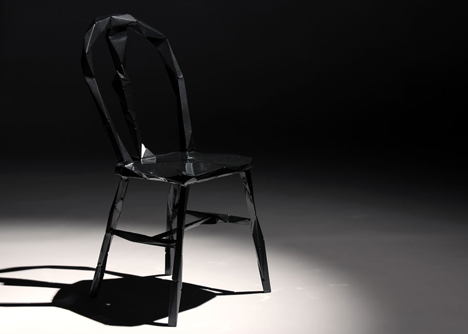
Windsor 2.0 was Hannula's graduation project and currently exists as a one-off. However, he believes it could form the basis of a collection of products that reinterpret other classic designs.
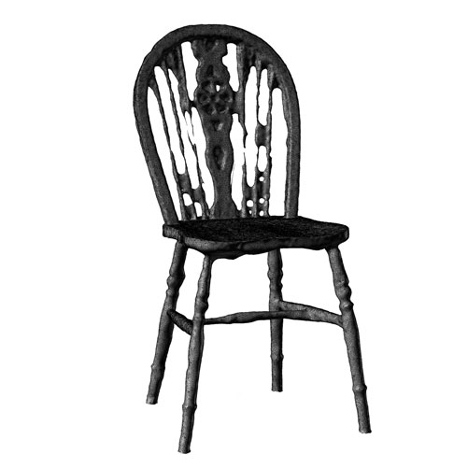
Here's some more information from the designer:
Windsor 2.0
Digital technologies are developing rapidly expanding from industry use to the average household opening up new exciting possibilities for the future. However, instead of just going forward we must not forget the past. Objects are only important as a source of memory and association: they affect us through their ability to bring back fragments of the past to the present.
My aim has been to look back and forth at the same time challenging the established division between tradition and innovation and blurring boundaries between low tech and hi tech. Using current digital tools I have ‘hacked’ into the DNA of an old Windsor chair resulting in a form that is typical for the digital age yet traditional and somehow familiar.
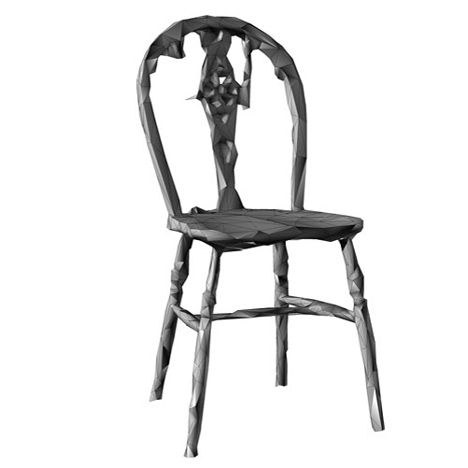
This project started as a thesis research project. I was trying to find out what kind of things people cherish in their homes and for what reasons. More than 50 % of all the respondents I interviewed mentioned memories as a reason for cherishing their special possessions. Although personal memories tend to evolve in time through different occasions and experiences, it is possible to make everyday objects to preserve history.
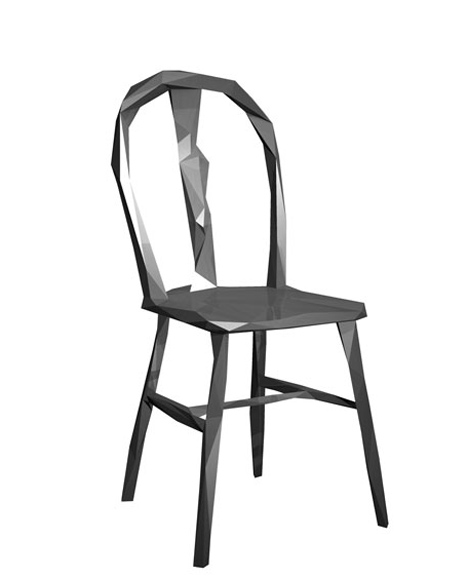
Windsor chair was a natural choice for the project because of its fundamental status in the furniture making history in High Wycombe and in the memory and the domestic landscape of Britain. I wanted to 'upgrade' this old, iconic piece of furniture, taking it to the digital age of 21st century.
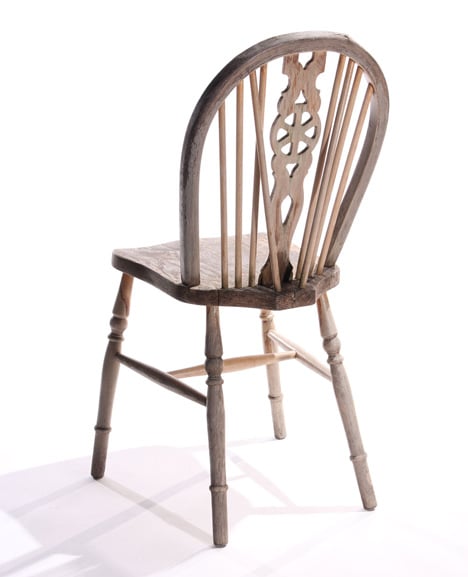
The original chair was 3D scanned using 123D Catch software from Autodesk and a pocket camera. The digital model was then abstracted and refined, making it structurally feasible and aesthetically pleasing. After that the templates were created by unfolding the model and transferred onto sheet steel, which was then cut and folded back into a form of a chair and spray-painted. Despite the digital emphasis of the design process, this chair was materialised by hand using very traditional methods and materials.
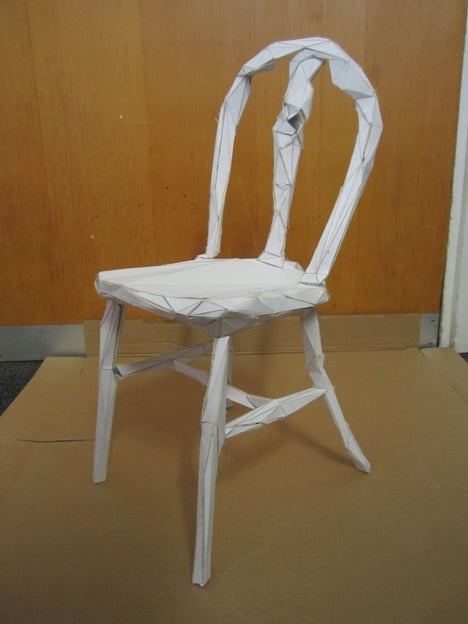
Although digital fabrication could have been applied in manufacturing process, folding the product corresponded better with the initial idea of an open-source production which whoever could download from the Internet and reconstruct themselves. Also, rabidly developing technology and increasingly cheaper costs of 3D printing will soon make it more economical to print out products like this. For now, however, this chair remains as a one-off piece, a 'furniture sculpture'.